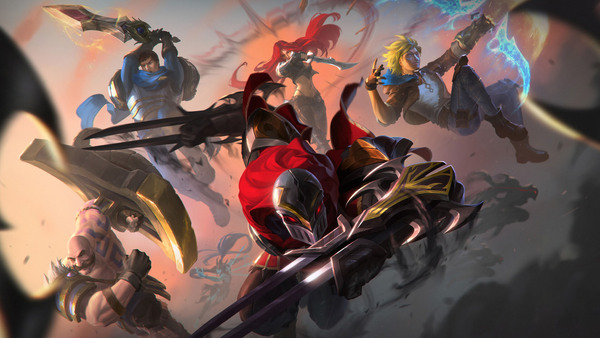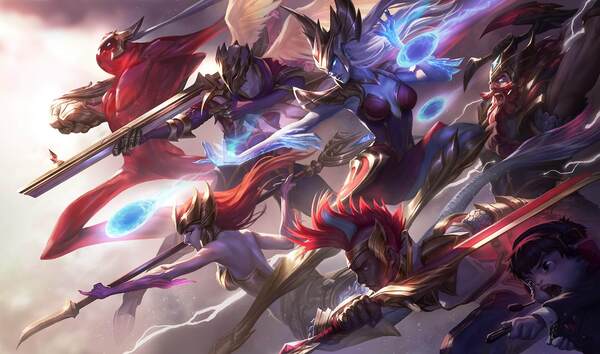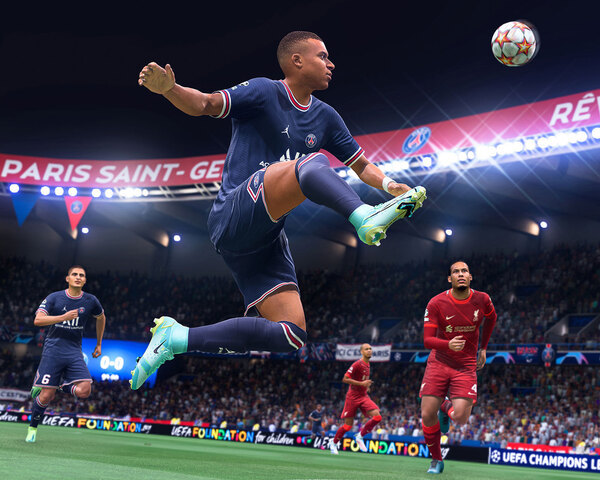Advertisement
Popular Now
In League of Legends (LoL), vision control is a critical yet often overlooked element that separates average players from top-tier strategists. Properly managing vision can turn the tide of battle by securing objectives, preventing ganks, and allowing teams to make more informed decisions. This guide explores vision control in-depth, providing actionable tips for effective warding, de-warding, and map awareness to enhance your game.
Understanding Vision Control and Its Importance
Vision control involves strategically placing wards to gain sight of key areas on the map. It’s essential for map awareness, tracking the enemy team, and ensuring objective control. Without vision, your team plays in the dark, exposing them to potential enemy ambushes and making it harder to achieve map dominance.
[caption id="attachment_1864" align="aligncenter" width="600"] Vision control involves strategically placing wards to gain sight of key areas on the map[/caption]
Why Vision Control Matters
Good vision control lets teams monitor high-traffic areas like jungle paths, objectives (Baron, Dragon), and laning areas, providing crucial information on enemy movements. This knowledge can prevent ganks and allow your team to secure objectives.
Key Tools for Vision Control
League provides multiple tools for vision control:
Warding Totem: Grants limited-time vision.
Control Wards: Reveals hidden wards and traps but can be destroyed by enemies.
Oracle Lens: Temporarily reveals hidden wards and traps in an area around the player.
Early Game Vision: Setting Up the Foundation
During the early game, vision control is essential for preventing enemy jungler ganks and setting up map dominance. Placing wards in jungle entrances, river areas, and bushes can provide critical information on enemy movements.
Ideal Early Game Ward Placements
Place wards in areas that the enemy jungler is likely to pass through, such as:
River Entrances: Helps spot incoming ganks for mid and bot lanes.
Enemy Buff Camps: Provides insight into the enemy jungler’s pathing.
Adapting Wards Based on Champion Roles
Different roles benefit from specific warding strategies:
Top Laners: Place wards in the top river and tri-bush for early warning of jungle ganks.
Mid Laners: Warding the sides of mid lane provides protection from both jungler and roamer ganks.
Mid-Game Vision: Controlling Objectives
In the mid-game, vision control shifts toward neutral objectives like Dragon and Rift Herald. Controlling these objectives gives your team advantages and can turn the momentum in your favor.
Placing Wards Around Objectives
Ensure that you have wards near:
Dragon Pit: To secure vision and protect from potential enemy ambushes.
Rift Herald/Baron Pit: Key objectives that require early preparation and control.
Clearing Enemy Wards
Use Control Wards or Oracle Lens to remove enemy vision around these areas, reducing their ability to contest objectives effectively.
Vision Control During Team Fights
Vision is crucial during team fights, especially in jungle and river areas where fights are unpredictable. Good vision positioning can allow you to spot the enemy team's setup and plan your own strategy accordingly.
Creating Optimal Vision for Team Fights
Placing wards in high-traffic paths helps provide your team with information on where enemies are positioned before a team fight begins. Focus on:
Choke Points: Areas where enemy champions are likely to funnel through.
Brushes Near Fight Zones: Allows your team to control vision in tight spaces, making it easier to ambush or retreat.
Using Vision to Set Up Ambushes
Hidden vision control can allow your team to catch isolated enemies off-guard, giving you an advantage before a team fight breaks out.
Advanced Warding Techniques
In high-level play, ward placement is more than just map coverage; it’s about strategically placing vision where enemies won’t expect it or can’t easily remove it.
Defensive vs. Offensive Warding
Defensive Warding: Placing wards near your jungle entrances to track enemy invades.
Offensive Warding: Positioning wards deep in the enemy jungle to track their jungler’s pathing.
Effective Ward Placements Based on Enemy Composition
If the enemy has champions with strong gank potential, consider placing wards in areas where they may lurk. Adapt your placements based on the enemy’s movement patterns and champion skills.
Late Game Vision: Securing the Win
Vision control becomes increasingly critical in the late game, as the consequences of death are more severe, and objectives like Baron and Elder Dragon can be game-deciding.
[caption id="attachment_1865" align="aligncenter" width="600"]
Vision control involves strategically placing wards to gain sight of key areas on the map[/caption]
Why Vision Control Matters
Good vision control lets teams monitor high-traffic areas like jungle paths, objectives (Baron, Dragon), and laning areas, providing crucial information on enemy movements. This knowledge can prevent ganks and allow your team to secure objectives.
Key Tools for Vision Control
League provides multiple tools for vision control:
Warding Totem: Grants limited-time vision.
Control Wards: Reveals hidden wards and traps but can be destroyed by enemies.
Oracle Lens: Temporarily reveals hidden wards and traps in an area around the player.
Early Game Vision: Setting Up the Foundation
During the early game, vision control is essential for preventing enemy jungler ganks and setting up map dominance. Placing wards in jungle entrances, river areas, and bushes can provide critical information on enemy movements.
Ideal Early Game Ward Placements
Place wards in areas that the enemy jungler is likely to pass through, such as:
River Entrances: Helps spot incoming ganks for mid and bot lanes.
Enemy Buff Camps: Provides insight into the enemy jungler’s pathing.
Adapting Wards Based on Champion Roles
Different roles benefit from specific warding strategies:
Top Laners: Place wards in the top river and tri-bush for early warning of jungle ganks.
Mid Laners: Warding the sides of mid lane provides protection from both jungler and roamer ganks.
Mid-Game Vision: Controlling Objectives
In the mid-game, vision control shifts toward neutral objectives like Dragon and Rift Herald. Controlling these objectives gives your team advantages and can turn the momentum in your favor.
Placing Wards Around Objectives
Ensure that you have wards near:
Dragon Pit: To secure vision and protect from potential enemy ambushes.
Rift Herald/Baron Pit: Key objectives that require early preparation and control.
Clearing Enemy Wards
Use Control Wards or Oracle Lens to remove enemy vision around these areas, reducing their ability to contest objectives effectively.
Vision Control During Team Fights
Vision is crucial during team fights, especially in jungle and river areas where fights are unpredictable. Good vision positioning can allow you to spot the enemy team's setup and plan your own strategy accordingly.
Creating Optimal Vision for Team Fights
Placing wards in high-traffic paths helps provide your team with information on where enemies are positioned before a team fight begins. Focus on:
Choke Points: Areas where enemy champions are likely to funnel through.
Brushes Near Fight Zones: Allows your team to control vision in tight spaces, making it easier to ambush or retreat.
Using Vision to Set Up Ambushes
Hidden vision control can allow your team to catch isolated enemies off-guard, giving you an advantage before a team fight breaks out.
Advanced Warding Techniques
In high-level play, ward placement is more than just map coverage; it’s about strategically placing vision where enemies won’t expect it or can’t easily remove it.
Defensive vs. Offensive Warding
Defensive Warding: Placing wards near your jungle entrances to track enemy invades.
Offensive Warding: Positioning wards deep in the enemy jungle to track their jungler’s pathing.
Effective Ward Placements Based on Enemy Composition
If the enemy has champions with strong gank potential, consider placing wards in areas where they may lurk. Adapt your placements based on the enemy’s movement patterns and champion skills.
Late Game Vision: Securing the Win
Vision control becomes increasingly critical in the late game, as the consequences of death are more severe, and objectives like Baron and Elder Dragon can be game-deciding.
[caption id="attachment_1865" align="aligncenter" width="600"] Vision control becomes increasingly critical in the late game, as the consequences of death are more severe[/caption]
Prioritizing Vision Around Baron and Elder Dragon
Use multiple Control Wards and deep wards around Baron and Elder Dragon. Losing sight around these objectives can lead to a quick enemy team victory.
Vision Denial Strategies
Denying vision is just as important as establishing your own. Removing enemy wards not only blinds them but also limits their options for safe rotations and fights.
Vision Control for Split-Pushing
For teams that rely on split-pushing strategies, vision control is essential to monitor the enemy team’s movements and ensure the safety of the split-pusher.
Key Vision Placement for Split Pushes
Place wards in the jungle near the split-pushing lane, allowing your team to spot any incoming enemy champions.
Protecting the Split-Pusher
Split-pushers, often playing champions with high mobility, should maintain wards along their path to avoid surprise ganks and secure safe escapes.
Adapting Vision Control Based on Game State
As the game progresses, adjust your vision strategy to match the shifting objectives and pressure points on the map. This flexibility allows your team to stay one step ahead.
Vision Control During Siege Situations
When sieging or defending a tower, place wards in nearby bushes to prevent enemy flanks and ensure safe escape routes.
Using Vision to Control Jungle Paths
Keeping vision in key jungle paths ensures safe rotations, allowing your team to move freely without risking ambushes.
Communication and Vision Coordination with Your Team
Effective vision control requires coordination. Ensure everyone on the team contributes to vision control by placing wards and removing enemy vision as needed.
Assigning Vision Responsibilities
Each player should prioritize vision in their lane and specific areas:
Support: Primary warder, responsible for objective and river vision.
Jungler: Places wards while moving between camps to cover multiple areas.
Communicating Ward Information
Use pings and chat to communicate the locations of enemy wards or blind spots. A well-informed team can take advantage of these gaps for ganks or objectives.
Common Vision Control Mistakes to Avoid
While vision control is crucial, many players fall into common traps that reduce their effectiveness.
Over-Warding the Same Spot
Avoid stacking multiple wards in the same area. Spread them out for maximum coverage.
Forgetting to Update Vision in Response to Game Changes
Vision should evolve with the game. Move your wards based on objectives, team rotations, and enemy positions.
[caption id="attachment_1866" align="aligncenter" width="600"]
Vision control becomes increasingly critical in the late game, as the consequences of death are more severe[/caption]
Prioritizing Vision Around Baron and Elder Dragon
Use multiple Control Wards and deep wards around Baron and Elder Dragon. Losing sight around these objectives can lead to a quick enemy team victory.
Vision Denial Strategies
Denying vision is just as important as establishing your own. Removing enemy wards not only blinds them but also limits their options for safe rotations and fights.
Vision Control for Split-Pushing
For teams that rely on split-pushing strategies, vision control is essential to monitor the enemy team’s movements and ensure the safety of the split-pusher.
Key Vision Placement for Split Pushes
Place wards in the jungle near the split-pushing lane, allowing your team to spot any incoming enemy champions.
Protecting the Split-Pusher
Split-pushers, often playing champions with high mobility, should maintain wards along their path to avoid surprise ganks and secure safe escapes.
Adapting Vision Control Based on Game State
As the game progresses, adjust your vision strategy to match the shifting objectives and pressure points on the map. This flexibility allows your team to stay one step ahead.
Vision Control During Siege Situations
When sieging or defending a tower, place wards in nearby bushes to prevent enemy flanks and ensure safe escape routes.
Using Vision to Control Jungle Paths
Keeping vision in key jungle paths ensures safe rotations, allowing your team to move freely without risking ambushes.
Communication and Vision Coordination with Your Team
Effective vision control requires coordination. Ensure everyone on the team contributes to vision control by placing wards and removing enemy vision as needed.
Assigning Vision Responsibilities
Each player should prioritize vision in their lane and specific areas:
Support: Primary warder, responsible for objective and river vision.
Jungler: Places wards while moving between camps to cover multiple areas.
Communicating Ward Information
Use pings and chat to communicate the locations of enemy wards or blind spots. A well-informed team can take advantage of these gaps for ganks or objectives.
Common Vision Control Mistakes to Avoid
While vision control is crucial, many players fall into common traps that reduce their effectiveness.
Over-Warding the Same Spot
Avoid stacking multiple wards in the same area. Spread them out for maximum coverage.
Forgetting to Update Vision in Response to Game Changes
Vision should evolve with the game. Move your wards based on objectives, team rotations, and enemy positions.
[caption id="attachment_1866" align="aligncenter" width="600"] Vision should evolve with the game. Move your wards based on objectives, team rotations, and enemy positions.[/caption]
Conclusion
Mastering vision control in League of Legends is a game-changer, offering a tactical advantage that goes beyond mechanical skill. By adapting your warding strategy to match the game state, objective control, and enemy composition, you can empower your team with the information needed to make strategic plays and avoid common pitfalls. Vision control, when executed well, is a subtle yet powerful way to influence the game’s outcome.
Vision should evolve with the game. Move your wards based on objectives, team rotations, and enemy positions.[/caption]
Conclusion
Mastering vision control in League of Legends is a game-changer, offering a tactical advantage that goes beyond mechanical skill. By adapting your warding strategy to match the game state, objective control, and enemy composition, you can empower your team with the information needed to make strategic plays and avoid common pitfalls. Vision control, when executed well, is a subtle yet powerful way to influence the game’s outcome.
 Vision control involves strategically placing wards to gain sight of key areas on the map[/caption]
Why Vision Control Matters
Good vision control lets teams monitor high-traffic areas like jungle paths, objectives (Baron, Dragon), and laning areas, providing crucial information on enemy movements. This knowledge can prevent ganks and allow your team to secure objectives.
Key Tools for Vision Control
League provides multiple tools for vision control:
Warding Totem: Grants limited-time vision.
Control Wards: Reveals hidden wards and traps but can be destroyed by enemies.
Oracle Lens: Temporarily reveals hidden wards and traps in an area around the player.
Early Game Vision: Setting Up the Foundation
During the early game, vision control is essential for preventing enemy jungler ganks and setting up map dominance. Placing wards in jungle entrances, river areas, and bushes can provide critical information on enemy movements.
Ideal Early Game Ward Placements
Place wards in areas that the enemy jungler is likely to pass through, such as:
River Entrances: Helps spot incoming ganks for mid and bot lanes.
Enemy Buff Camps: Provides insight into the enemy jungler’s pathing.
Adapting Wards Based on Champion Roles
Different roles benefit from specific warding strategies:
Top Laners: Place wards in the top river and tri-bush for early warning of jungle ganks.
Mid Laners: Warding the sides of mid lane provides protection from both jungler and roamer ganks.
Mid-Game Vision: Controlling Objectives
In the mid-game, vision control shifts toward neutral objectives like Dragon and Rift Herald. Controlling these objectives gives your team advantages and can turn the momentum in your favor.
Placing Wards Around Objectives
Ensure that you have wards near:
Dragon Pit: To secure vision and protect from potential enemy ambushes.
Rift Herald/Baron Pit: Key objectives that require early preparation and control.
Clearing Enemy Wards
Use Control Wards or Oracle Lens to remove enemy vision around these areas, reducing their ability to contest objectives effectively.
Vision Control During Team Fights
Vision is crucial during team fights, especially in jungle and river areas where fights are unpredictable. Good vision positioning can allow you to spot the enemy team's setup and plan your own strategy accordingly.
Creating Optimal Vision for Team Fights
Placing wards in high-traffic paths helps provide your team with information on where enemies are positioned before a team fight begins. Focus on:
Choke Points: Areas where enemy champions are likely to funnel through.
Brushes Near Fight Zones: Allows your team to control vision in tight spaces, making it easier to ambush or retreat.
Using Vision to Set Up Ambushes
Hidden vision control can allow your team to catch isolated enemies off-guard, giving you an advantage before a team fight breaks out.
Advanced Warding Techniques
In high-level play, ward placement is more than just map coverage; it’s about strategically placing vision where enemies won’t expect it or can’t easily remove it.
Defensive vs. Offensive Warding
Defensive Warding: Placing wards near your jungle entrances to track enemy invades.
Offensive Warding: Positioning wards deep in the enemy jungle to track their jungler’s pathing.
Effective Ward Placements Based on Enemy Composition
If the enemy has champions with strong gank potential, consider placing wards in areas where they may lurk. Adapt your placements based on the enemy’s movement patterns and champion skills.
Late Game Vision: Securing the Win
Vision control becomes increasingly critical in the late game, as the consequences of death are more severe, and objectives like Baron and Elder Dragon can be game-deciding.
[caption id="attachment_1865" align="aligncenter" width="600"]
Vision control involves strategically placing wards to gain sight of key areas on the map[/caption]
Why Vision Control Matters
Good vision control lets teams monitor high-traffic areas like jungle paths, objectives (Baron, Dragon), and laning areas, providing crucial information on enemy movements. This knowledge can prevent ganks and allow your team to secure objectives.
Key Tools for Vision Control
League provides multiple tools for vision control:
Warding Totem: Grants limited-time vision.
Control Wards: Reveals hidden wards and traps but can be destroyed by enemies.
Oracle Lens: Temporarily reveals hidden wards and traps in an area around the player.
Early Game Vision: Setting Up the Foundation
During the early game, vision control is essential for preventing enemy jungler ganks and setting up map dominance. Placing wards in jungle entrances, river areas, and bushes can provide critical information on enemy movements.
Ideal Early Game Ward Placements
Place wards in areas that the enemy jungler is likely to pass through, such as:
River Entrances: Helps spot incoming ganks for mid and bot lanes.
Enemy Buff Camps: Provides insight into the enemy jungler’s pathing.
Adapting Wards Based on Champion Roles
Different roles benefit from specific warding strategies:
Top Laners: Place wards in the top river and tri-bush for early warning of jungle ganks.
Mid Laners: Warding the sides of mid lane provides protection from both jungler and roamer ganks.
Mid-Game Vision: Controlling Objectives
In the mid-game, vision control shifts toward neutral objectives like Dragon and Rift Herald. Controlling these objectives gives your team advantages and can turn the momentum in your favor.
Placing Wards Around Objectives
Ensure that you have wards near:
Dragon Pit: To secure vision and protect from potential enemy ambushes.
Rift Herald/Baron Pit: Key objectives that require early preparation and control.
Clearing Enemy Wards
Use Control Wards or Oracle Lens to remove enemy vision around these areas, reducing their ability to contest objectives effectively.
Vision Control During Team Fights
Vision is crucial during team fights, especially in jungle and river areas where fights are unpredictable. Good vision positioning can allow you to spot the enemy team's setup and plan your own strategy accordingly.
Creating Optimal Vision for Team Fights
Placing wards in high-traffic paths helps provide your team with information on where enemies are positioned before a team fight begins. Focus on:
Choke Points: Areas where enemy champions are likely to funnel through.
Brushes Near Fight Zones: Allows your team to control vision in tight spaces, making it easier to ambush or retreat.
Using Vision to Set Up Ambushes
Hidden vision control can allow your team to catch isolated enemies off-guard, giving you an advantage before a team fight breaks out.
Advanced Warding Techniques
In high-level play, ward placement is more than just map coverage; it’s about strategically placing vision where enemies won’t expect it or can’t easily remove it.
Defensive vs. Offensive Warding
Defensive Warding: Placing wards near your jungle entrances to track enemy invades.
Offensive Warding: Positioning wards deep in the enemy jungle to track their jungler’s pathing.
Effective Ward Placements Based on Enemy Composition
If the enemy has champions with strong gank potential, consider placing wards in areas where they may lurk. Adapt your placements based on the enemy’s movement patterns and champion skills.
Late Game Vision: Securing the Win
Vision control becomes increasingly critical in the late game, as the consequences of death are more severe, and objectives like Baron and Elder Dragon can be game-deciding.
[caption id="attachment_1865" align="aligncenter" width="600"] Vision control becomes increasingly critical in the late game, as the consequences of death are more severe[/caption]
Prioritizing Vision Around Baron and Elder Dragon
Use multiple Control Wards and deep wards around Baron and Elder Dragon. Losing sight around these objectives can lead to a quick enemy team victory.
Vision Denial Strategies
Denying vision is just as important as establishing your own. Removing enemy wards not only blinds them but also limits their options for safe rotations and fights.
Vision Control for Split-Pushing
For teams that rely on split-pushing strategies, vision control is essential to monitor the enemy team’s movements and ensure the safety of the split-pusher.
Key Vision Placement for Split Pushes
Place wards in the jungle near the split-pushing lane, allowing your team to spot any incoming enemy champions.
Protecting the Split-Pusher
Split-pushers, often playing champions with high mobility, should maintain wards along their path to avoid surprise ganks and secure safe escapes.
Adapting Vision Control Based on Game State
As the game progresses, adjust your vision strategy to match the shifting objectives and pressure points on the map. This flexibility allows your team to stay one step ahead.
Vision Control During Siege Situations
When sieging or defending a tower, place wards in nearby bushes to prevent enemy flanks and ensure safe escape routes.
Using Vision to Control Jungle Paths
Keeping vision in key jungle paths ensures safe rotations, allowing your team to move freely without risking ambushes.
Communication and Vision Coordination with Your Team
Effective vision control requires coordination. Ensure everyone on the team contributes to vision control by placing wards and removing enemy vision as needed.
Assigning Vision Responsibilities
Each player should prioritize vision in their lane and specific areas:
Support: Primary warder, responsible for objective and river vision.
Jungler: Places wards while moving between camps to cover multiple areas.
Communicating Ward Information
Use pings and chat to communicate the locations of enemy wards or blind spots. A well-informed team can take advantage of these gaps for ganks or objectives.
Common Vision Control Mistakes to Avoid
While vision control is crucial, many players fall into common traps that reduce their effectiveness.
Over-Warding the Same Spot
Avoid stacking multiple wards in the same area. Spread them out for maximum coverage.
Forgetting to Update Vision in Response to Game Changes
Vision should evolve with the game. Move your wards based on objectives, team rotations, and enemy positions.
[caption id="attachment_1866" align="aligncenter" width="600"]
Vision control becomes increasingly critical in the late game, as the consequences of death are more severe[/caption]
Prioritizing Vision Around Baron and Elder Dragon
Use multiple Control Wards and deep wards around Baron and Elder Dragon. Losing sight around these objectives can lead to a quick enemy team victory.
Vision Denial Strategies
Denying vision is just as important as establishing your own. Removing enemy wards not only blinds them but also limits their options for safe rotations and fights.
Vision Control for Split-Pushing
For teams that rely on split-pushing strategies, vision control is essential to monitor the enemy team’s movements and ensure the safety of the split-pusher.
Key Vision Placement for Split Pushes
Place wards in the jungle near the split-pushing lane, allowing your team to spot any incoming enemy champions.
Protecting the Split-Pusher
Split-pushers, often playing champions with high mobility, should maintain wards along their path to avoid surprise ganks and secure safe escapes.
Adapting Vision Control Based on Game State
As the game progresses, adjust your vision strategy to match the shifting objectives and pressure points on the map. This flexibility allows your team to stay one step ahead.
Vision Control During Siege Situations
When sieging or defending a tower, place wards in nearby bushes to prevent enemy flanks and ensure safe escape routes.
Using Vision to Control Jungle Paths
Keeping vision in key jungle paths ensures safe rotations, allowing your team to move freely without risking ambushes.
Communication and Vision Coordination with Your Team
Effective vision control requires coordination. Ensure everyone on the team contributes to vision control by placing wards and removing enemy vision as needed.
Assigning Vision Responsibilities
Each player should prioritize vision in their lane and specific areas:
Support: Primary warder, responsible for objective and river vision.
Jungler: Places wards while moving between camps to cover multiple areas.
Communicating Ward Information
Use pings and chat to communicate the locations of enemy wards or blind spots. A well-informed team can take advantage of these gaps for ganks or objectives.
Common Vision Control Mistakes to Avoid
While vision control is crucial, many players fall into common traps that reduce their effectiveness.
Over-Warding the Same Spot
Avoid stacking multiple wards in the same area. Spread them out for maximum coverage.
Forgetting to Update Vision in Response to Game Changes
Vision should evolve with the game. Move your wards based on objectives, team rotations, and enemy positions.
[caption id="attachment_1866" align="aligncenter" width="600"] Vision should evolve with the game. Move your wards based on objectives, team rotations, and enemy positions.[/caption]
Conclusion
Mastering vision control in League of Legends is a game-changer, offering a tactical advantage that goes beyond mechanical skill. By adapting your warding strategy to match the game state, objective control, and enemy composition, you can empower your team with the information needed to make strategic plays and avoid common pitfalls. Vision control, when executed well, is a subtle yet powerful way to influence the game’s outcome.
Vision should evolve with the game. Move your wards based on objectives, team rotations, and enemy positions.[/caption]
Conclusion
Mastering vision control in League of Legends is a game-changer, offering a tactical advantage that goes beyond mechanical skill. By adapting your warding strategy to match the game state, objective control, and enemy composition, you can empower your team with the information needed to make strategic plays and avoid common pitfalls. Vision control, when executed well, is a subtle yet powerful way to influence the game’s outcome. 
















